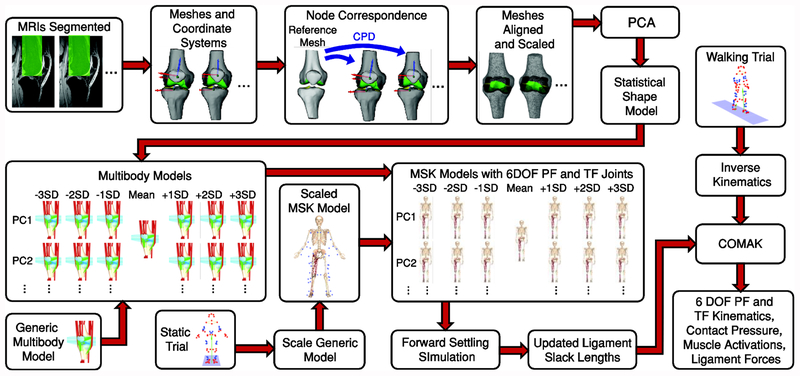Figure 1:
MRIs from 14 asymptomatic knees were segmented to create surface meshes. Node correspondence was established between these using Coherent Point Drift (CPD). Principal Component Analysis (PCA) was applied to create a whole joint statistical shape model. This was used to generate multibody models ranging from −3 to +3 standard deviations (SD) of the first six principal components (PCs). These were incorporated into a musculoskeletal model to create models with 6 degree of freedom (DOF) patellofemoral (PF) and tibiofemoral (TF) joints. Ligament slack lengths were updated for each model using a forward settling procedure. An overground walking trial from one participant was simulated using the Concurrent Optimization of Muscle Activations and Kinematics (COMAK) with each model to assess the effects of geometry on knee kinematics, cartilage contact, and ligament forces.

